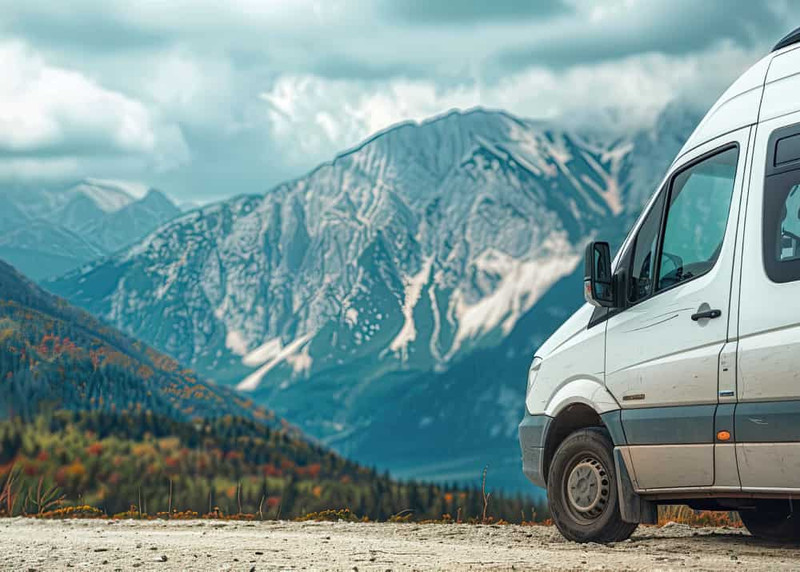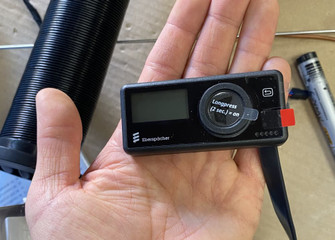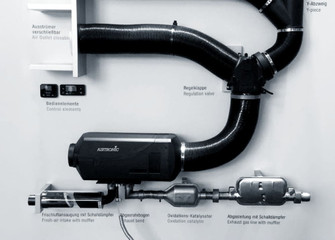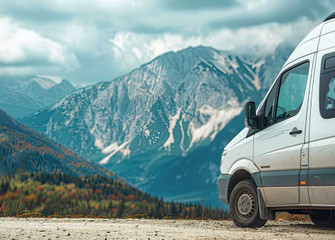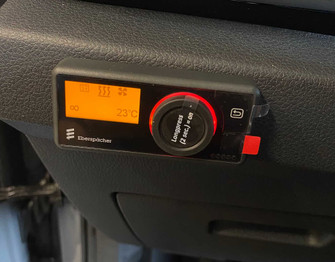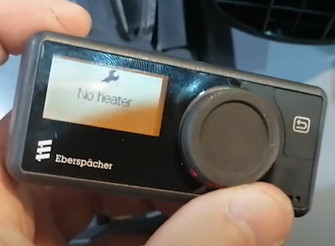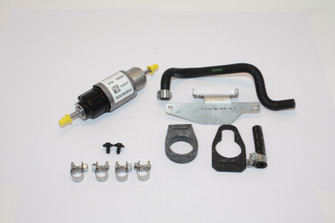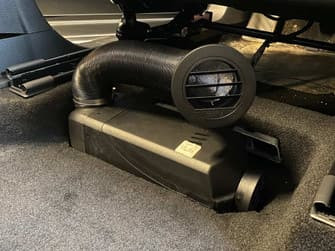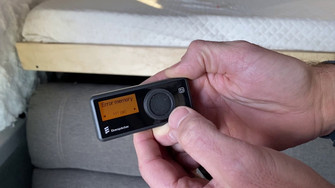Why Webasto 2000 STC Heater Stops Working at High Altitudes
Posted by bz@heatso.com on 14th Sep 2025
A van owner contacted Heatso after his Webasto 2000 STC diesel heater suddenly stopped working during a ski trip. The heater had been running flawlessly, but at 8,000 feet above sea level it began making unusual sounds, lost heating efficiency, and finally displayed an F02 “No Start” code.
Why Webasto 2000 STC Heater Stops Working at High Altitudes
A van owner contacted Heatso after his Webasto 2000 STC diesel heater suddenly stopped working during a ski trip. The heater had been running flawlessly, but at 8,000 feet above sea level it began making unusual sounds, lost heating efficiency, and finally displayed an F02 “No Start” code. The problem wasn’t the installation, but rather the heater’s altitude limit. In this blog, we explain what happened, why altitude matters for diesel heaters, and what you can do to avoid this issue on your adventures.
When a Reliable Heater Suddenly Fails
The Webasto 2000 STC is one of the most popular diesel heaters for vans and small campers. Compact, efficient, and generally reliable, it is a favorite among van owners.
In this case, the heater was professionally installed and initially worked perfectly. But during the customer’s ski trip, the unit began to lose performance. It made unusual sounds, produced less heat, and eventually shut down altogether with an F02 “No Start” error flashing on the Rheostat controller.
Since the installation was fresh and done by a trained Webasto technician, we quickly ruled out wiring, ducting, or fuel line issues. Something else was at play.
The Hidden Factor: Altitude Limits on the 2000 STC
After a quick phone consultation, our support team asked the customer a key question: What altitude are you at right now?
The answer revealed the root cause. He was camping at 8,000 feet above sea level. Unfortunately, the Webasto Air Top 2000 STC has a maximum altitude capacity of 5,000 feet. Beyond this, the air-to-fuel ratio shifts, causing incomplete combustion.
At high altitudes, thin air prevents the heater from burning fuel efficiently. This leads to soot and residue quickly building up inside the burner chamber. The customer’s heater had essentially choked itself with carbon buildup, triggering the shutdown. Check out this video to see what carbon buildup looks like in real life.
Why Altitude Matters for Diesel Heaters
Diesel heaters rely on precise fuel metering and air intake to achieve clean combustion. When oxygen is limited at higher altitudes, fuel burns less efficiently.
The consequences include:
- Accumulated soot in the burner chamber
- Strange noises and reduced heating power
- Flash codes such as F02 “No Start”
- Premature servicing needs (cleaning or replacement of the burner chamber)
This is not a sign of poor quality or faulty installation. It is simply a limitation of the design.
Inside of the burning chamber
If your 2000 STC stopped working in the mountains, there’s no official Webasto fix to extend the altitude capacity. But you can take steps to reduce damage and keep the unit running once you return to lower elevations.
Heatso’s recommendations:
- Run the heater at its highest setting for 1–2 hours once you’re back below 5,000 ft. This helps burn off accumulated soot.
- Avoid using the heater continuously above its altitude limit. Short-term operation may be possible, but it accelerates carbon buildup in the burning chamber.
- If performance issues continue, servicing may be required - cleaning or even replacing the Webasto heater burner chamber.
The Better Solution: A Heater Built for Altitude
If you’re a van lifer or skier who spends lots of time above 5,000 feet, the Webasto 2000 STC may not be the right choice.
Instead, Webasto offers the Air Top Evo 40 Diesel RVIA-compliant version, which has automatic altitude adjustment up to 18,000 ft. This makes it ideal for mountain driving, skiing trips, or high-altitude camping without the risk of soot buildup.
FAQs: Webasto 2000 STC Troubleshooting and Altitude Issues
- What does the F02 error mean on a Webasto 2000 STC?
The Webasto F02 error or “No Start” code means the heater failed to ignite properly. On the Webasto 2000 STC, this often occurs at high altitudes where there is less oxygen for clean combustion. - Why did my Webasto 2000 STC stop working during my ski trip?
If your 2000 STC stopped working in the mountains, it’s likely because the heater exceeded its altitude capacity of 5,000 ft. At higher elevations, fuel does not burn efficiently, causing soot buildup in the burner chamber. - Can a Webasto heater work at high altitude?
Most Webasto air heaters, including the 2000 STC, have an altitude limit of around 5,000 ft. Running a Webasto heater at high altitude for extended periods is not recommended. Unless you get the high altitude capable models like the Air Top Evo 40 Diesel RVIA-compliant version - How do I fix a Webasto F02 no start error?
To address a Webasto 2000 STC no start situation, first confirm your altitude. If you are above 5,000 ft, return to lower elevation and run the heater on max setting for 1–2 hours to burn off soot. If the error continues, the burner may need professional cleaning or replacement. - Is there a way to increase the Webasto 2000 STC altitude limit?
No. There is no official Webasto altitude kit for the 2000 STC. Using it beyond 5,000 ft will accelerate carbon buildup and shorten its lifespan. - What is the best Webasto heater for high altitude camping?
The Webasto Air Top Evo 40 is designed for altitude, with automatic adjustment up to 18,000 ft. It is the best choice for camper van high altitude heating compared to the 2000 STC. - Webasto Evo 40 vs 2000 STC – which should I choose?
If you mainly camp below 5,000 ft, the Webasto 2000 STC is compact, efficient, and reliable. But if you travel in the mountains, the Webasto Evo 40 is superior due to its automatic altitude adjustment. - How do I clean a Webasto 2000 STC burner chamber?
If your heater shows repeated F02 no start codes due to high altitude exposure, it may require burner cleaning. This involves removing the heater, disassembling it, and cleaning or replacing the burner chamber insert, glow pin, gaskets etc. There are special servicing kits available for this. For safety, this should be done by a qualified technician. - Why does my Webasto heater not start even at low altitude with F02 error code?
If your Webasto heater is not starting at sea level, the cause may be different - such as fuel supply issues, electrical faults, or improper ducting. The F02 code is not limited to altitude problems. - Where can I find more information on other Webasto error codes?
You can reach out to Heatso or check out our guide on Webasto error codes.
Safety Note: Always consult the official Webasto installation and troubleshooting manuals before attempting any repairs. Operating heaters outside of their specifications can lead to premature damage, performance loss, or unsafe conditions.
Get the Right Heater for Your Adventures
At Heatso, we want your heater to work wherever your journey takes you. If you mostly travel below 5,000 ft, the Webasto 2000 STC is an excellent choice. But if you’re often at higher altitudes, consider upgrading to the Air Top Evo 40 Diesel RVIA-compliant version with built-in altitude adjustment.
Browse our full selection of Webasto heaters and accessories at Heatso.com, or contact our team for expert advice.
